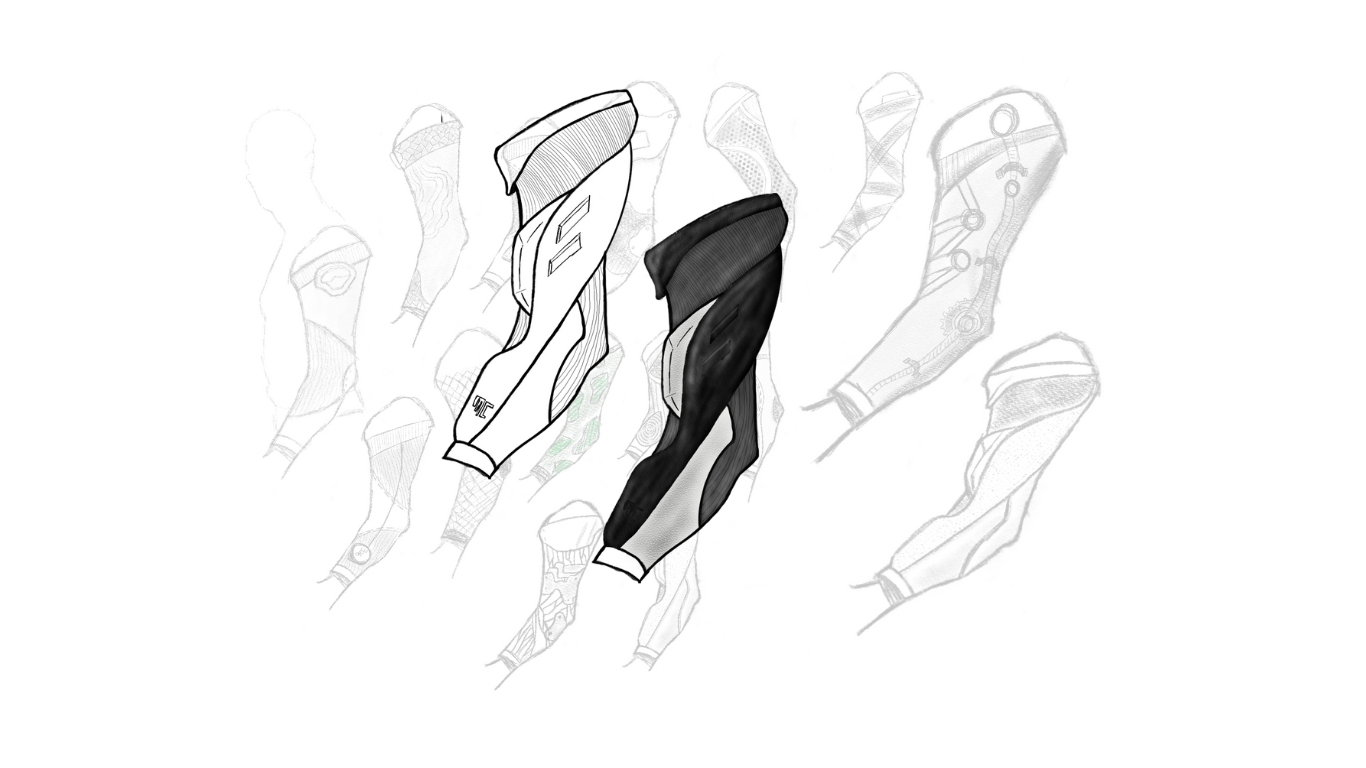A compression sleeve that injects stem cells through heat compression. This is designed to take stem cell therapy further into standard pracice to treat sport related injuries.
Stem wear
Design Process
Since this project was anything but ordinary, I figured my approach shouldn’t be either. I ended up diving deep into discovery, trying to find the best medical fit, only to realize that, because the design was speculative, I was nudged toward just creating a solid concept rather than chasing a perfect solution.
Cue multiple tweaks and revisions as I searched for the best design. It took time (and a few headaches), but in the end, it was worth the effort.
Context
When we got the positive health brief, I was all in and excited to tackle something speculative and really push my 3D modelling skills. I decided to explore how stem cell therapy could become a standard treatment for sports injuries and, more importantly, how to make it accessible to everyone. My idea? Integrate stem cell therapy into a compression sleeve that could be prescribed based on the type of injury.
I went down quite a few research rabbit holes before landing on stem cell therapy as the best direction. The final concept was structured into three key sections.
01 - Stem Cells
02 - Compression
03 - Injection
After discovering how effective stem cell therapy is for injury recovery, I dug into how it actually works and, more importantly, how much it costs.
Turns out, it’s ridiculously expensive and not covered by health insurance, meaning it’s basically reserved for elite athletes and the ultra-wealthy. Not exactly ideal.
I wanted to change that by making stem cell therapy accessible to anyone who could benefit from it. So, I developed a cast-like system where injured patients could visit their local A&E and opt for stem cell therapy in the form of a wearable, cast-like product.
01 - Stem Cells
When designing this product, I knew compression was going to be a challenge. The heat-activated materials available today require extremely high temperatures, making them totally impractical for wearable use, they're usually meant for tubing, not humans.
But since this was a speculative project, I had the creative freedom to assume that, in the near future, a fabric could exist that compresses with minimal heat.
My solution? Use an exothermic reaction triggered at the start of the injection process to activate “Heat Shrink Nylon,” allowing the sleeve to compress effectively without the need for excessive heat.
02 - Compression
Stem cell therapy typically starts with three initial injections directly into the injured area—which quickly became a challenge for my design. At first, I considered a topical treatment, but that idea was a non-starter since it wouldn’t penetrate the skin effectively.
So, I pivoted to a more innovative approach: nettle-like micro-needles that would deliver the stem cells through pressure. Combined with the compression of the sleeve, this method would ensure the treatment was both effective and seamless.
03 - Injection
Vision
I envisioned a wearable device that could actively pump medication into the injured area, providing targeted treatment while keeping things simple and efficient. At the same time, I wanted it to offer support without locking the joint in place or limiting movement too much. The goal was to experiment with future materials and push the boundaries of what’s possible—creating something truly speculative yet grounded in real potential.
Final Design
After collecting all the relevant data, I was finally able to start designing my final concept. With all three components in mind, I created a compression sleeve designed to inject stem cells directly into the injury, kickstarting the recovery process. The goal was for this product to be widely accessible and easy to implement as part of standard medical practice.

















